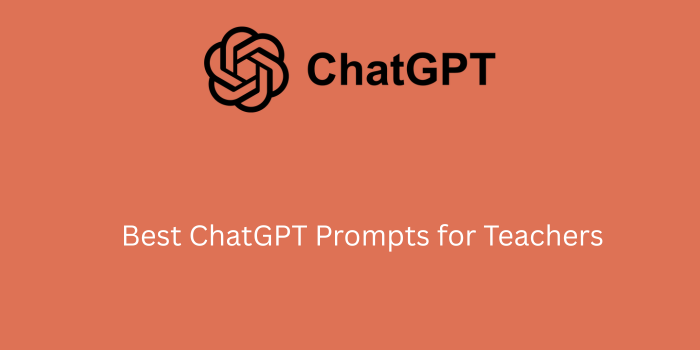AI tools like ChatGPT are quickly becoming invaluable resources for teachers. Rather than replacing educators, ChatGPT enhances productivity by streamlining time-consuming tasks like lesson planning, drafting emails, or generating feedback. With just a few well-crafted prompts, teachers can access fresh ideas, save time, and focus more on student engagement. From kindergarten to college classrooms, ChatGPT adapts to different teaching styles, offering support across subjects and grade levels.
Used effectively, ChatGPT acts like a virtual assistant—helping brainstorm lesson activities, simplify complex topics, and improve communication with parents. It also supports differentiated instruction and inclusive planning. Many educators start small by asking ChatGPT for a quick lesson outline or quiz, then iterate based on student needs. In this guide, you’ll discover the best ChatGPT prompts for teachers, organized by key areas: lesson planning, classroom management, student engagement, grading, communication, and professional growth. Let’s explore how AI can elevate your teaching workflow.
ChatGPT Prompts for Lesson Planning
Lesson planning is one of the most time-consuming tasks for teachers, but it’s also where creativity matters most. ChatGPT can help generate complete lesson plans or suggest ideas to make lessons more engaging. You can tailor its responses by specifying subject, grade level, and objectives. This turns ChatGPT into an AI lesson-planning assistant that understands your goals.
By providing clear prompts, ChatGPT can outline learning objectives, suggest materials or activities, and even propose assessment methods. For example, try asking ChatGPT to:
"Create a lesson plan for a 5th grade science class on the water cycle, including objectives, materials, activities, and assessment.""Design an interactive math lesson about fractions for 3rd graders with games or hands-on activities.""Generate an outline for a high school history lesson on World War II, including a hook, key points, and a short quiz.""Plan a creative art lesson on the water cycle for 4th grade, including objectives, activities, and a fun project.""Outline a middle school literature lesson on 'Romeo and Juliet' with key discussion questions and activities."
These prompts demonstrate how detailed instructions can yield useful teaching resources. Teachers often use ChatGPT to refine their plans: you might first ask for a full plan, then follow up with prompts like “Can you suggest more engaging activities for this lesson?”. This two-step approach helps in creating robust, student-centered lessons.
For example, you can ask ChatGPT to differentiate a lesson for learners with different needs: “Adapt this lesson plan for English language learners or students with special needs accommodations.” This helps you create inclusive lesson plans that cater to all students.
ChatGPT Prompts for Classroom Management
Effective classroom management is key to a positive learning environment. ChatGPT can suggest strategies for maintaining order, encouraging student cooperation, and addressing common challenges. For example, you might use ChatGPT as a sounding board when dealing with a disruptive student or planning classroom rules. This makes ChatGPT a handy teacher communication tool for solving everyday classroom issues.
Teachers can ask ChatGPT for tips on conflict resolution, ways to keep students on task, or engaging activities to calm an energetic class. Here are some prompt ideas:
"What are five effective strategies to manage a classroom where students are frequently off-task during lessons?""Suggest ways to motivate a group of 8th graders who are showing low participation in science class.""Create a set of positive behavior rules and incentives for a K-2 classroom.""List three fun morning routines to help students start the day with enthusiasm.""Explain how to set up a fair classroom behavior contract with student input."
ChatGPT can also help you draft positive classroom messages, such as motivational notes or praise for good behavior. You could prompt it: “Write a short congratulatory note to a student who improved their test scores,” to encourage and communicate in supportive language.
These examples show how ChatGPT can brainstorm practical ideas. You can refine the output by asking follow-up questions. For instance, if ChatGPT suggests a behavior chart, you could prompt: “How can I implement this behavior chart effectively?”. By iterating on its responses, you tap into creative classroom management solutions that save time and energy.
ChatGPT Prompts for Student Engagement
Keeping students engaged is crucial for effective learning. ChatGPT can help teachers come up with creative student engagement ideas like games, projects, or discussion starters. Use ChatGPT to add variety to your lessons or to reframe complex topics in a fun way.
For example, you could ask ChatGPT to:
"Generate 5 interactive activity ideas for a high school chemistry class on chemical reactions.""Create an exciting story problem involving fractions for 6th grade math.""Suggest group project topics for a history class studying ancient civilizations.""Write three open-ended discussion questions for a 7th grade literature class reading 'The Giver'.""Create a role-play scenario to teach good sportsmanship in a physical education class."
Additionally, ChatGPT can role-play or act as an interactive participant. For example, asking it to simulate a character relevant to the lesson (like a historical figure or a scientific phenomenon speaking in first person) can captivate students’ interest. You can also use it to check the difficulty of your activities by having ChatGPT complete the tasks you design, ensuring they are appropriately challenging.
You can even ask ChatGPT to generate multiple engagement ideas at once. For example, “List 10 interactive activities for a geography lesson.” This flexibility means you can quickly adapt to what works best for your students.
These prompts encourage ChatGPT to think outside the box and suggest engaging content. You can also tailor prompts to your class interests: for instance, “Plan a science fair project idea that relates to environmental issues.” After getting a response, refine it by asking follow-ups like how to implement the activity or adjust it for different learning levels. Using ChatGPT in this way keeps your classes lively and caters to diverse learning styles.
ChatGPT Prompts for Grading and Assessment
Grading with AI tools can save time, but it’s still one of the most labor-intensive parts of teaching. While ChatGPT shouldn’t replace a teacher’s professional judgment, it can streamline some aspects of assessment. For instance, ChatGPT can help generate quiz questions, draft grading rubrics, or suggest insightful feedback. This way, you reduce repetitive work and focus on personalized evaluation.
Here are some prompt examples for grading support:
"Create a multiple-choice quiz with answers on the topic of photosynthesis for 7th grade.""Draft a grading rubric for a 5th grade writing assignment on narrative storytelling.""Provide constructive feedback comments for a high school student who wrote an essay about the American Civil War.""Generate 5 multiple-choice questions (with answers) on the American Revolution for 6th grade.""Write feedback comments for a student who scored 80% on a math test, highlighting strengths and areas to improve."
One caution: always double-check the answers and rubrics that ChatGPT provides to ensure they align with your grading standards. Use AI-generated suggestions as a draft to refine, not as final grades.
These prompts can save time by giving you a solid starting point. You might ask ChatGPT to refine an answer key or suggest improvements to a rubric. For feedback, ChatGPT can draft generic comments which you can personalize. By combining AI-generated assistance with your own expertise, grading becomes more efficient without sacrificing quality.
ChatGPT Prompts for Communication with Parents
Clear communication with parents is vital, but writing newsletters and updates can be time-consuming. ChatGPT can help draft emails, letters, or messages for parents in a professional and friendly tone. It ensures important details aren’t overlooked and saves valuable time.
Here are some prompt examples to assist with parent communication:
"Write an email to parents introducing myself as their child's new 2nd grade teacher and explain how they can support learning at home.""Draft a letter to parents about the upcoming science fair, including preparation tips and event details.""Compose a progress report summary for parents, highlighting a student's strengths in reading and strategies for improvement.""Write a brief progress report email to a parent about a student excelling in math.""Create a friendly reminder email to parents about an upcoming deadline for school event RSVP."
Another trick: ask ChatGPT to translate your message into another language for parents who prefer it. For example, “Translate this email into Spanish.” It’s a quick way to use teacher communication tools to reach all families effectively.
With these prompts, ChatGPT can generate well-structured messages that you can customize. For example, after getting an email draft, you could say: “Add a positive encouraging closing sentence.” The result is polished communication that keeps parents engaged in their child’s education without taking up all your afternoon.
ChatGPT Prompts for Professional Development
Teachers are lifelong learners too, and ChatGPT can assist with professional development. Whether you want to explore new teaching methods, find helpful resources, or reflect on your practice, AI can provide suggestions. This ensures you stay current without spending hours researching.
Examples of prompts for professional growth include:
"Recommend professional development courses on integrating technology in elementary education.""List books and articles about project-based learning for middle school teachers.""How can a teacher use ChatGPT to improve classroom engagement and lesson creativity? Provide steps.""Recommend free online webinars for teachers on digital literacy.""List strategies for effective time management for busy teachers."
You can also ask ChatGPT to summarize new research or suggest actionable teaching tips based on recent trends, making it easier to stay informed in less time.
Tip: You can even have ChatGPT summarize webinars or articles you attended, asking it to extract the key takeaways. This can help busy teachers digest new information quickly.
These prompts can produce reading lists, course suggestions, or actionable plans. After getting recommendations, you might follow up with questions like “Which of these resources is best for a busy teacher?”. By using ChatGPT as a personal learning coach, you can boost teacher productivity in your own development and bring fresh ideas back to the classroom.
Frequently Asked Questions (FAQs)
Teachers can use ChatGPT effectively by providing clear, specific prompts that match their teaching goals. For example, specify the grade level, subject, and desired outcome in your question. Always review and adapt the AI’s suggestions to fit your classroom context. With practice, you’ll learn how to tweak prompts for the best results.
ChatGPT can be used creatively to spark student interest. For instance, it can generate quiz questions, story problems, or project ideas. You might use it to create a game or simulation scenario, draft role-play dialogues, or develop writing prompts based on student interests. Combining these ideas with your own curriculum makes lessons more engaging.
No, ChatGPT is a supplement to, not a replacement for, a teacher’s expertise. It can automate routine tasks like drafting outlines, but it can’t understand your students or curriculum as you do. Always use your professional judgment to modify and improve any AI-generated content. Think of ChatGPT as a helpful co-worker that suggests ideas, which you refine and implement in class.
To use ChatGPT responsibly, keep student privacy in mind and avoid sharing personal or sensitive information in prompts. Verify facts and solutions that the AI provides, since it can sometimes make mistakes. Also, encourage students to use AI as a learning tool, not just an answer factory. By setting clear guidelines and combining AI help with human oversight, you can safely leverage ChatGPT in your teaching.
Teachers should remember that AI models like ChatGPT can sometimes produce errors or lack context. Always review its output and make sure it fits your lesson objectives and student needs. It’s also important to teach students to think critically about AI-generated answers. By guiding students on responsible AI use and fact-checking, teachers can ensure technology remains a beneficial tool in the classroom.
Teachers need to set clear guidelines about student use of ChatGPT. It can be a helpful research or brainstorming tool, but students should not simply copy answers. Encourage them to use AI responsibly: for instance, to generate ideas or check their understanding. Emphasize critical thinking by asking students to explain or expand on any AI-generated suggestions. This way, ChatGPT becomes a learning aid rather than a shortcut.
Conclusion
In conclusion, ChatGPT and other AI tools for teachers can transform the way educators work by offering support in lesson planning, classroom management, grading, and more. By using well-crafted prompts, teachers can quickly generate ideas and materials, freeing up time to focus on students. Remember, ChatGPT is a tool to assist your expertise, not replace it. As you incorporate these prompts into your teaching routine, you’ll likely see increased efficiency and creativity.
Try experimenting with your own prompts and adjust them to your subject and grade level. With practice, using ChatGPT for education becomes second nature – a smart way to boost teacher productivity and make teaching a bit easier. Explore the prompts above and watch how AI can enhance your teaching strategies and engage your students in new ways.
Now is a great time to start experimenting. Even trying one new ChatGPT prompt each week can make a big difference in your workflow. Remember, the quality of results depends on your instructions. Be specific and clear, and you’ll develop a prompt-writing skill that helps you get the most out of this AI assistant. By embracing ChatGPT, you’re taking a step toward a more efficient, creative classroom.
Give one of these ChatGPT prompts a try during your next lesson planning session and observe how it transforms your approach. Happy teaching with AI!






